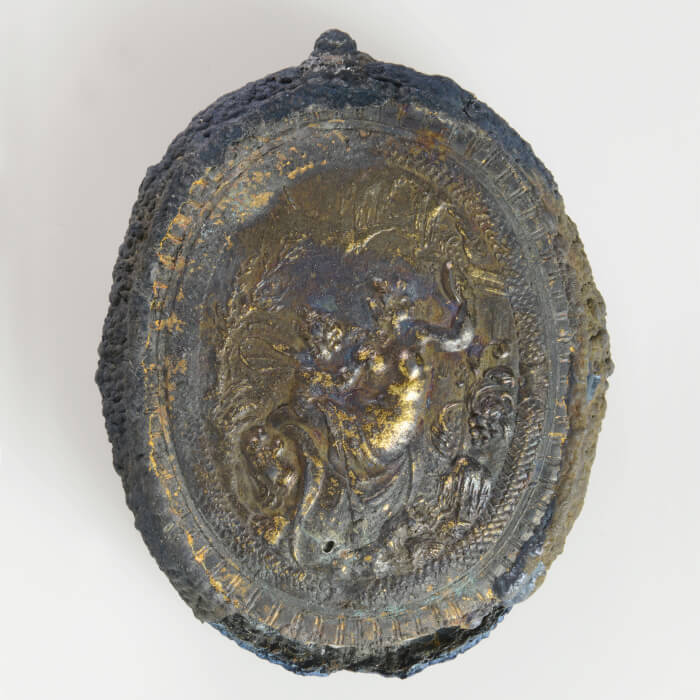My main expertise lies in the study of archaeological metal and textiles. Currently, I am working together with researchers Janneke van der Stok (Metals, Inc), Tonny Beentjes and Maarten van Bommel (University of Amsterdam) to examine precious metals after excavation (the AMOR project). We selected several historically valuable gilded objects from a 17th century shipwreck, BZN17, which sunk near Texel, the Netherlands. One of the objects, a gilded brass oval powder box with an image of Venus and Cupid (pictured) is of special interest because we believe it may still have its original beeswax coating. In historic collections these type of objects have been polished and cleaned over and over again to make them shine, removing all original coatings. This box, buried for centuries underwater, may still preserve this important information on itsoriginal appearance. Our wider aim is to establish a practical and optimized research and conservation strategy for marine precious metals, to preserve this important surface information. Based on the analytical results, we plan to develop a flowchart and workshops for archaeologists and conservators to aid decision-making after excavation of precious metal.
One of the difficulties in studying these objects is the heterogeneity of the material and the fact that the objects contain layers. For instance, if we want to analyze the composition of the powder box with X-ray fluorescence (XRF), several layers of material obscure the inside, whether intentionally added (such as gilding) or corrosion products. Another problem is that an archaeological object may have been subjected to a conservation treatment that has removed relevant information on manufacture, use and burial conditions.
We prefer to study cultural heritage objects in a noninvasive manner, extracting as much information as possible from the object without taking samples, or using the smallest samples possible. For the AMOR project we used X-rays to study the construction of different objects, followed by careful analysis with XRF. Where sampling was possible, samples were embedded in epoxy and polished to study them with optical microscopy and scanning electron microscopy (SEM) coupled to an energy dispersive X-ray (EDX) detector. SEMEDX is my favorite instrument since it allows you to examine materials in high detail and analyze the chemical composition at the same time. Corrosion products give spectacular images! Corrosion products also hold a lot of information about the making of the object and the burial conditions it has been subjected to for all those years. Organic materials like our suspected beeswax coatings can be analyzed by GC-MS. Collaborations with the Technical University of Delft and the University of Amsterdam are providing us with access to promising new techniques like neutron and micro-CT imaging.
I am also involved in the development of an “Irradiation Passport for Art”. In the desire to extract as much information as possible from cultural heritage objects, we are increasingly exposing them to ionizing radiation. Modern analytical techniques use interactions with photons, electrons and ions to identify the materials in the object. But those interactions could induce visible or invisible alterations, the long-term effects of which are not fully known. Exposure to radiation is cumulative, which means that previous exposure may change the sensitivity of objects or research samples. Therefore, we believe art objects and research samples in the field of cultural heritage need an irradiation passport, recording the location, total exposure and circumstances of radiation exposure to date.

